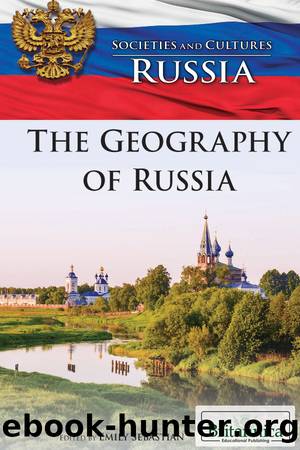The Geography of Russia by Emily Sebastian

Author:Emily Sebastian
Language: eng
Format: epub
Tags: Other
Publisher: Britannica Educational Publishing
Russia is divided up into 60 administrative divisions, of various types.
Legislation has further affirmed the power of the federal government over the regions. For example, the regional governors and their deputies were prohibited from representing their region in the Federation Council on the grounds that their sitting in the Federation Council violated the principle of the separation of powers; however, under a compromise, both the legislative and executive branch of each region sent a member to the Federation Council. Legislation enacted in 2004 permitted the president to appoint the regional governors, who earlier were elected. In the first decade of the 21st century, the country began to undergo administrative change aimed at subordinating smaller okruga to neighbouring members of the federation.
Following these reforms in regional government, the new federal districts began to replace the 11 traditional economic regions, particularly for statistical purposes. The Central district unites the city of Moscow with all administrative divisions within the Central and Central Black Earth economic regions. The Northwest district combines the city of St. Petersburg with all areas in the North and Northwest regions, including Kaliningrad oblast. The Southern district includes portions of the Volga and North Caucasus economic regions; the North Caucasus district encompasses the remaining units of the latter economic region. The Volga district merges units of the Volga, Volga-Vyatka, and Ural economic regions. The Urals district consists of the remaining administrative divisions of the Ural economic region along with several from the West Siberia economic region. The Siberia district unites the remainder of the West Siberia economic region and all of East Siberia. Finally, the Far East district is congruent with the Far East economic region. The Crimean district, created in 2014 following Russiaâs annexation of Ukrainian territory, included the federal city of Sevastopol.
Several of the administrative divisions established constitutions that devolved power to local jurisdictions, and, though the 1993 constitution guaranteed local self-governance, the powers of local governments vary considerably. Some local authorities, particularly in urban centres, exercise significant power and are responsible for taxation and the licensing of businesses. Moscow and St. Petersburg have particularly strong local governments, with both possessing a tax base and government structure that dwarf the countryâs other regions. Local councils in smaller communities are commonly rubber-stamp agencies, accountable to the city administrator, who is appointed by the regional governor. In the mid-1990s municipal government was restructured. City councils (dumas), city mayors, and city administrators replaced former city soviets.
Download
This site does not store any files on its server. We only index and link to content provided by other sites. Please contact the content providers to delete copyright contents if any and email us, we'll remove relevant links or contents immediately.
Pale Blue Dot by Carl Sagan(4961)
Cracking the GRE Premium Edition with 6 Practice Tests, 2015 (Graduate School Test Preparation) by Princeton Review(4251)
Pocahontas by Joseph Bruchac(4216)
Unfiltered by Lily Collins(3986)
The Emotionary: A Dictionary of Words That Don't Exist for Feelings That Do by Eden Sher(3337)
The Daily Stoic by Holiday Ryan & Hanselman Stephen(3268)
Factfulness_Ten Reasons We're Wrong About the World_and Why Things Are Better Than You Think by Hans Rosling(3218)
The 48 laws of power by Robert Greene & Joost Elffers(3152)
The President Has Been Shot!": The Assassination of John F. Kennedy by Swanson James L(3073)
Sapiens and Homo Deus by Yuval Noah Harari(3036)
Rogue Trader by Leeson Nick(3013)
The Innovators: How a Group of Hackers, Geniuses, and Geeks Created the Digital Revolution by Walter Isaacson(3009)
Gettysburg by Iain C. Martin(2806)
The Rape Of Nanking by Iris Chang(2797)
Almost Adulting by Arden Rose(2687)
The Plant Paradox by Dr. Steven R. Gundry M.D(2583)
In the Woods by Tana French(2563)
500 Must-Know AP Microeconomics/Macroeconomics Questions(2547)
Make by Mike Westerfield(2306)
